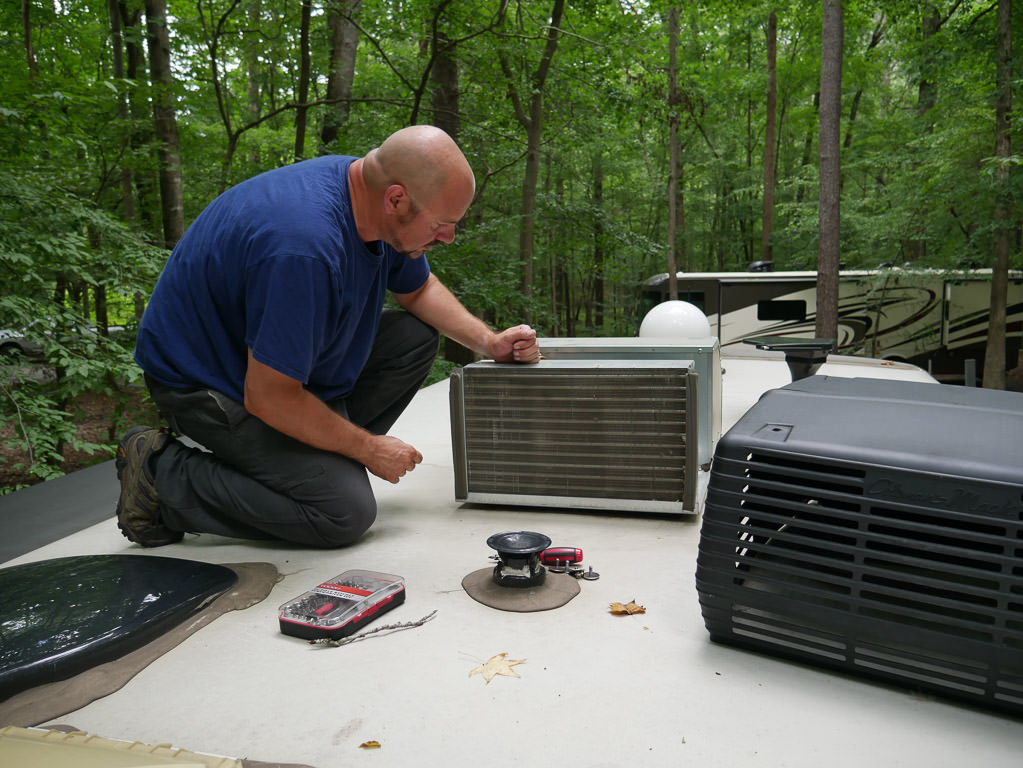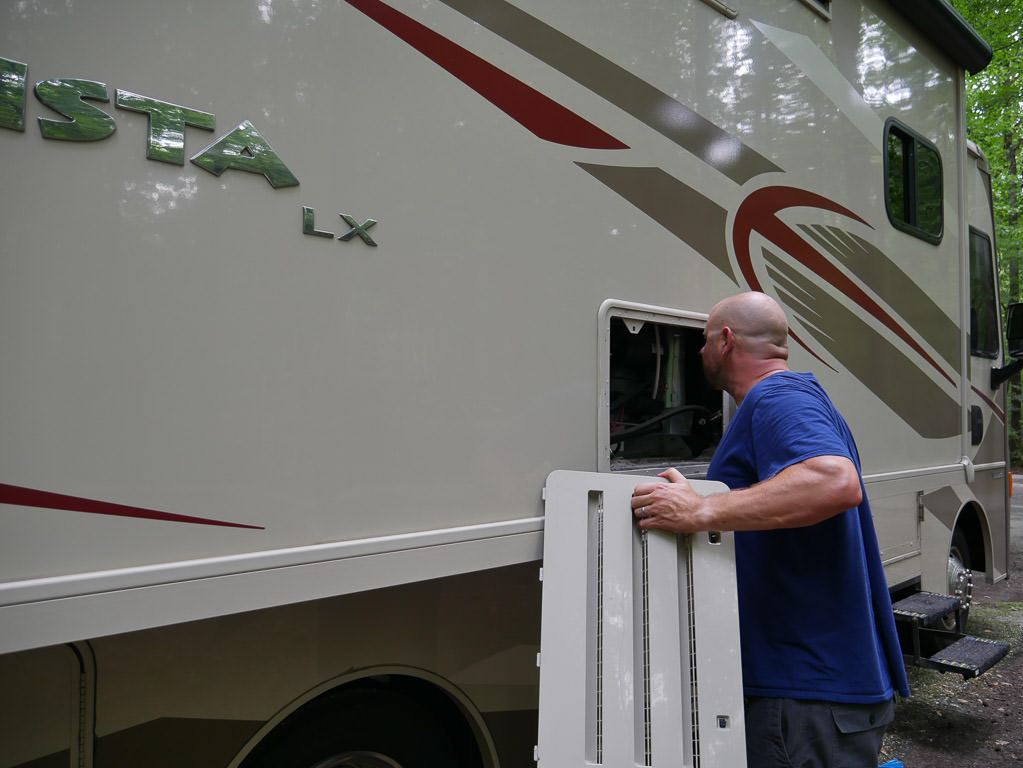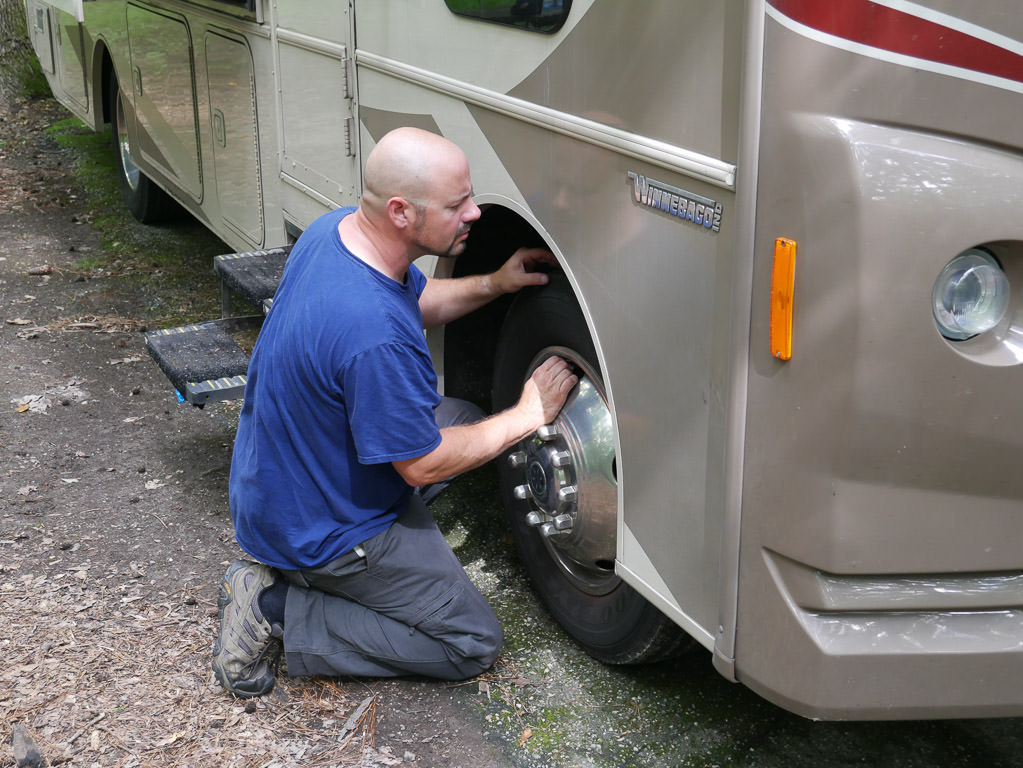
Preventative RV Maintenance & Care: Part 1 -- Outside Checks
No matter how you use your RV, maintenance is very important. But, for full-timers like us, using your RV more often means you will need to be even more diligent about preventative and scheduled maintenance. However, these are tips every RV owner can benefit from, you may just need to adjust the timetables to suit your travel style.
We consider two big components to our RV maintenance: the powertrain/chassis and the home that sits on top of it. Our RV is not only our home, but often our commuter vehicle as well. It is what we rely on to take us from one work assignment to the next. And because of this, our RV needs to be kept in top condition.
We move every seven to nine days and have put over 30,000 miles on our RV in the last year, so maintenance has become just part of the routine to keep not only the chassis and powertrain running great, but the home half as well.
Maintaining a Rolling Home
In this article, I am going to concentrate mostly on the home portion of the RV, because I believe most people know how important it is to keep their vehicles running with routine oil changes, as well as tire, brake and fluid level checks.
I will add though, that our chassis does need to be greased with every oil change and we also recently did a fluid analysis from JG Lubricants on our engine oil, transmission fluid and generator oil to be sure everything was not only clean, but also that there are no problems starting to develop in our engine and transmission.
We cannot stress this enough: catching small problems or issues early before they become full-blown issues can not only save time by keeping the RV out of the shop, but also money.
Every time we take the RV down the road we are basically subjecting our home to mini earthquakes. There are so many systems in the RV and they all work together to keep us safe and comfortable. It is important to check each major component regularly to avoid future issues. In this first part of my two-part series, I'll focus on what you should be checking for and doing outside your RV. So, let's start at the top and work our way down.
Roof Inspection
I try to get up on our roof as much as possible and check over caulk, seals and the overall condition of the roof. (Just be very careful while you are up there!)
Caulk: I am usually looking for peeling, cracking or separation of caulk, not only around items such as vents and antennas, but along the perimeter of the roof line as well. As I mention in this RV wash tutorial video, I often do most of these checks while cleaning the roof. Inspecting a clean roof will help you better identify small problems before they become big issues. No one enjoys rain inside their RV!

Air conditioning: While I am up on the roof with our RV unplugged from shore power, I also remove our air conditioner cover and inspect our A/C unit to make sure the fins are clear of any debris. I also inspect to make sure the fins are straight and in good condition. I do the A/C inspection twice a year and clean the filters that are located inside the RV weekly.
Slide toppers & awning: Next, I take a look at the condition of all our slide toppers and awning fabric, making sure there are no signs of stress or tearing.
RV Sides
Window seals: Moving down from the roof, I inspect our window seals, again looking for peeling, cracking or separation in the caulk.
Fridge & furnace: I remove vent covers for our fridge and inspect them for bugs and nests. It is also important to check that the drain tube is clean and clear, however, this is not applicable for a residential-style refrigerator. Speaking of clean and clear, I also do a visual inspection of our furnace exhaust to make sure we do not have any hitch hikers in there.

Awning & slides: I inspect our awning arms and use three-in-one brand silicone spray to keep all of the joints lubed. This is also a great time to inspect the condition of your slides. I try to keep our slide tracks dry and clean, I will wipe them down with a terry cloth, then spray them with the same three-in-one silicone spray to keep them running smooth.
Steps: I clean and lube our retractable steps every three months using the same silicon spray, I also check and tighten any bolts on the steps as we have noticed they tend to work themselves loose over time with all of the bouncing around we do going down the road. One thing you can do to prevent this is swap out some of the hardware with Nyloc nuts, they have a nylon inert that will help stand up to vibration from all of the traveling we do as full-timers.
The Feet of the RV
The tires and jacks are inspected weekly. We recently purchased snap pads for our jacks, we think of them as shoes that not only protect the surfaces of parks and campgrounds we visit, but they are protecting our jack pad as well.
Jacks: What I am looking for the most while inspecting our jacks are any signs of rust or discoloring on the arms of the jacks. I am also looking for any hydraulic fluid leaks.
Tires: For the tires, I am also visually inspecting them for any signs of abnormal wear, drying or cracking. I try my best to inspect the tread for any nails or screws that we may pick up going through parking lots or gas stations. Sometimes you can have a screw in a tire and not have it affect its performance till down the road somewhere.

Generator
Our generator is a gas Onan 4,000 and I change the oil in our generator every one hundred hours. If you are using your RV in a seasonal manner, and not reaching one hundred hours often, then it is suggested you change it at least yearly and use your generator at least monthly. You can do this by starting up the generator and letting it run thirty minutes or so with an electrical load such as running the A/C unit or hot water heater.
I also inspect our air filter along with our spark plug every six months, and change if needed.
This wraps up the first half of our routine care and preventative maintenance of our RV. Our next blog post continues on to the inside of the RV and will include electrical and plumbing.
Comments
Comments on this post are moderated, so they will not appear instantly. All relevant questions and helpful notes are welcome! If you have a service inquiry or question related to your RV, please reach out to the customer care team directly using the phone numbers or contact form on this page .